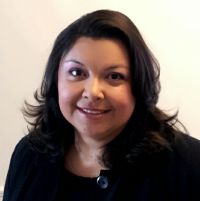
For Latinas, Sanctuary Spaces are Not Enough!
In 2015, the Department of Education reported that 1 in 5 women in the US is Latina. By 2060, this number is projected to be about 1 in 3 women.
As a Latina, I was surprised by these numbers because I did not expect the current Latina population to be near 20% of the entire US female population and over 10% of the entire US population![1] In 2010 and 2015, 50.8% of the population in the US was female.[2] That means that over 10% of the entire US population is Latina and that percentage could be around 18% in 2060 if the projection is correct and the male/female ratio remains the same in the US.[3]
But I was also alarmed by these numbers. Why? Because of other statistics about this population:
- While Latinas earn more bachelor’s degrees than their male counterparts, they still earn less than these men in the labor market. (Latinas earn only 56 cents on the dollar in comparison to Anglo/Euro-American males.)[4]
- About 33% of Latinas become pregnant by the age of 20.[5]
- Latinoa teens have consistently higher suicide rates than their black and white counterparts - 18.9% have seriously considered attempting suicide; 15.7% have made a plan about how they would attempt suicide; 11.3% have attempted suicide.[6]
What does this have to do with teaching, religion, and politics? Well, if Latinas account for over 10% of the US population, and 60% of the Latinoa population[7] are citizens of the US, then we are saying that at least 6% of US citizens are Latinoa. Yet, I find few syllabi or resources at the university and seminary-level that are engaging issues of concern for Latinas. The dearth is especially obvious in general education courses. This is significant because misperceptions of Latinas leads large numbers of US citizens to think that the majority of Latinas are not citizens and should be, depending on one’s political affiliations, treated accordingly.
Many of my students in the Midwest have lived without engaging the Latinoa population and I have found in my teaching at the University of Dayton, and other institutions, that they do not know about the complex and varied realities of Latina life in the US. When I share with them that most Latinas are born citizens or born to citizen parents and then naturalized, students have told me that they thought most Latinas came to this country by crossing the Mexico/US border on rafts. I am concerned that talk of sanctuary spaces in response to statements made by the President-Elect will focus student attention on creating these sanctuary spaces with little regard to either the diversity of Latina life or the social issues which affect them. In other words, sanctuary spaces are not enough for us to fix the social ills of the pueblo.
Our systems of education do not help to make these connections either. But, I believe we religion scholars have a special role to play in teaching and learning with and about Latinas.I am listing some resources below to start the discussion about this topic. What other resources do you know/have you used to teach with and about Latinas?
Resources
Ada María Isasi-Díaz. Mujerista Theology. Maryknoll, NY: Orbis Books, 1996.
Jacqueline Hidalgo. Revelation in Aztlán: Scriptures, Utopias, and the Chicano Movement. London, UK: Palgrave Macmillan, 2016.
Lara Medina. "Nepantla Spirituality: An Emancipative Vision for Inclusion" in Wading Through Many Voices (2011).
Latinitas – www.laslatinitas.com – This Texas-based organization empowers young Latinas through media and technology to become strong and confident leaders.
Maria Pilar Aquino, Daisy L. Machado, & Jeanette Rodrguez. A Reader in Latina Feminist Theology. Austin, TX: University of Texas Press, 2002.
Various authors in Orlando O. Espín. The Wiley-Blackwell Companion to Latino/a Theology. Hoboken: NJ, 2015.
[4] http://www.nationalpartnership.org/research-library/workplace-fairness/fair-pay/latinas-wage-gap.pdf
[5] https://www.cdc.gov/nchs/products/databriefs/db136.htm
[7] http://www.politifact.com/punditfact/statements/2015/jul/29/jose-diaz-balart/majority-hispanic-population-us-born-says-jose-dia/; http://factfinder.census.gov/faces/nav/jsf/pages/index.xhtml
Leave a Reply